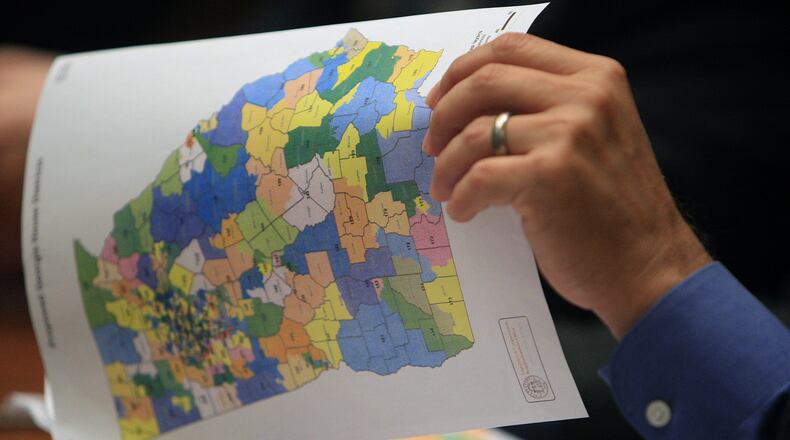States across the country are redesigning their district lines. A few plans are already released. Some use special committees or legislative sessions while others convene independent commissions to draw their maps. Regardless of the manner, how many mapmakers take into consideration the impact their decisions will have on women’s representation in their legislatures?
Credit: contributed
Credit: contributed
We certainly know that redistricting is a political process, and it is not an easy task as many factors and constraints go into drawing congressional and legislative lines. But there’s one more factor that needs to be considered. Female incumbent legislators are not always protected in these rounds of redistricting, and the willingness to carve new districts which might attract or promote female candidates are not the highest priority for those crafting the new lines.
Women across the aisle are underrepresented in state legislatures in every state except Nevada, where women are now 60% of legislators. According to the Center for American Women and Politics at Rutgers University, in 2021, women comprise 31% of state legislators nationally, and of that percentage, 66% are Democrat and 33% are Republican. Women of color also only make up 26.5% of women currently serving in state legislatures.
Credit: contributed
Credit: contributed
Why should we care? The best, most comprehensive policies that positively affect the most people are created by reflective decision-makers. This means ensuring more women and individuals with different backgrounds are at these influential tables at every level across the country.
Partisan leaders hold the most influence and power within their state legislative leadership positions. And in this political season, these leaders are at the forefront of calculated redistricting decisions. To gain these leadership positions, it takes electoral security and time to build seniority, not to mention a good dose of strategic maneuvering and partisan loyalty.
Yet women’s rise in politics is a rather new phenomena with significant gains in electoral seats only occurring over the last 20 years. Currently, only 15 women serve as presidents or presidents pro tempore of their state senate and only 7 serve as speakers of their state houses. Further, many women legislators represent districts in urban and suburban areas of America that experience either population declines or significant increases. Their legislative districts are more likely to change.
Thus, female legislators are again caught in a bind; they are more junior members of the legislature, they hold few if any leadership positions, and their districts are likely to have lost or gained voters. For example, both Oregon and Colorado have gained a congressional seat, while Illinois and Michigan have each lost a congressional seat. Will these Western states open a district perhaps favorable to one of its current female state legislators to run for Congress or continue to reward one of the good ol’ boys? Will the upper Midwest states work to protect any of its 7 female representatives elected since 2018 (including two Republicans and one Democrat elected in 2020)?
Illinois recently proved our point by releasing their congressional map that shows both Republican female incumbents have been put into new districts with Republican male incumbents. Additionally, we know that Georgia, a “purpling” state, saw no congressional seat change, but the 2021 redistricting process is set to dismantle the two suburban districts north of Atlanta which have elected two Democratic women.
In too many states, female lawmakers lack seniority and the astute political leadership positions to be included in redistricting conversations. Not only their status but also their greater likelihood to face a changing population in their districts leave female legislators much more vulnerable in redistricting. They are more likely to lose their voter base, be paired with another incumbent, or face a more-qualified political challenger. Specifically in 2011, in Georgia we saw female incumbents paired against more senior male colleagues in new districts, forcing them to seek other offices or leave politics altogether.
Perhaps some haven’t considered this factor, but it’s clear women’s representation in legislatures is greatly affected by redistricting. We hope that those still drawing maps will take a closer look at how their lines will affect their colleagues, especially women in both parties and people of color.
Larissa Martinez is president and CEO of Women’s Public Leadership Network. Dr. Karen Owen is associate professor of political science and director of the Thomas B. Murphy Center for Public Service at the University of West Georgia.
About the Author
Keep Reading
The Latest
Featured




